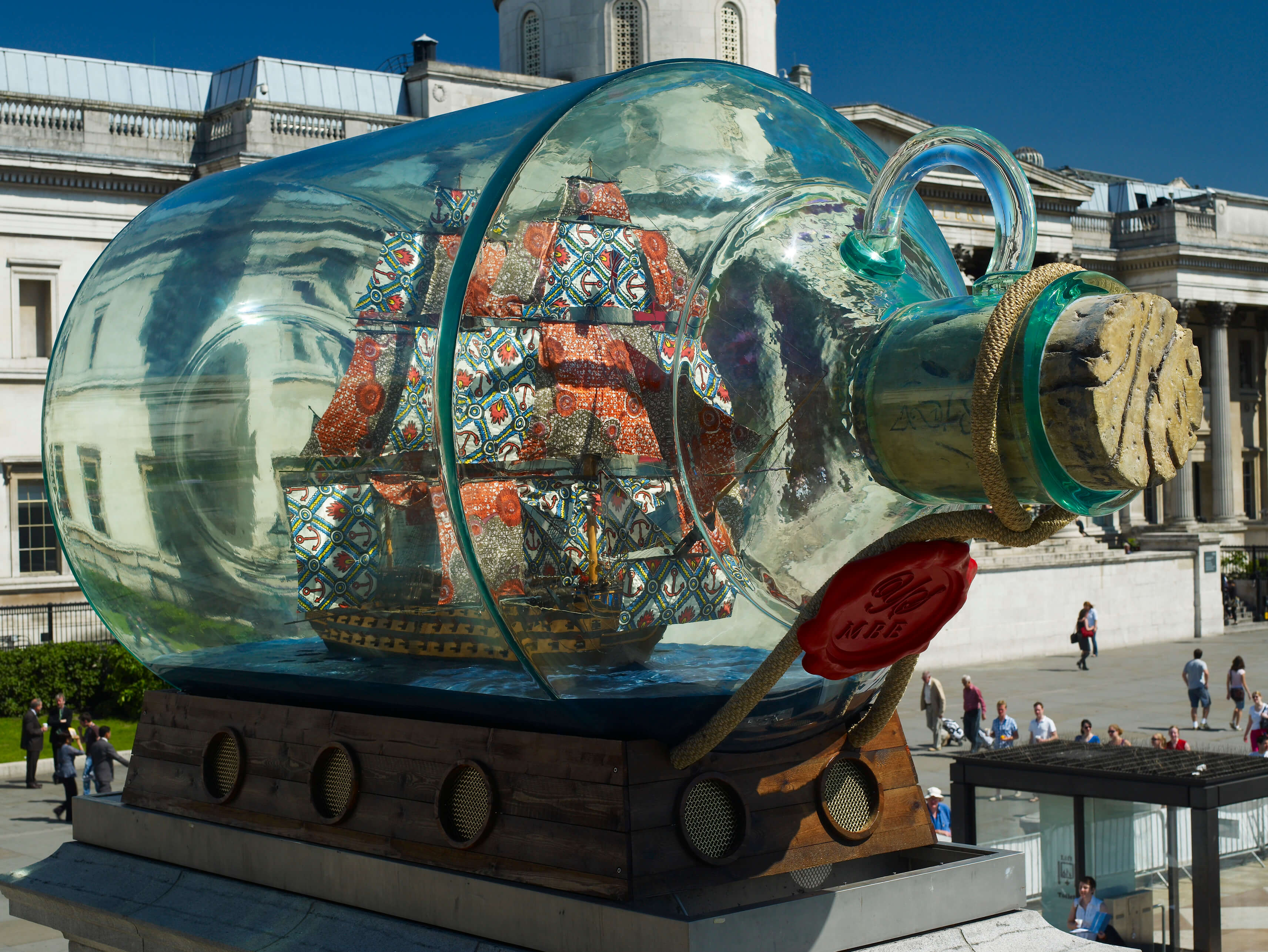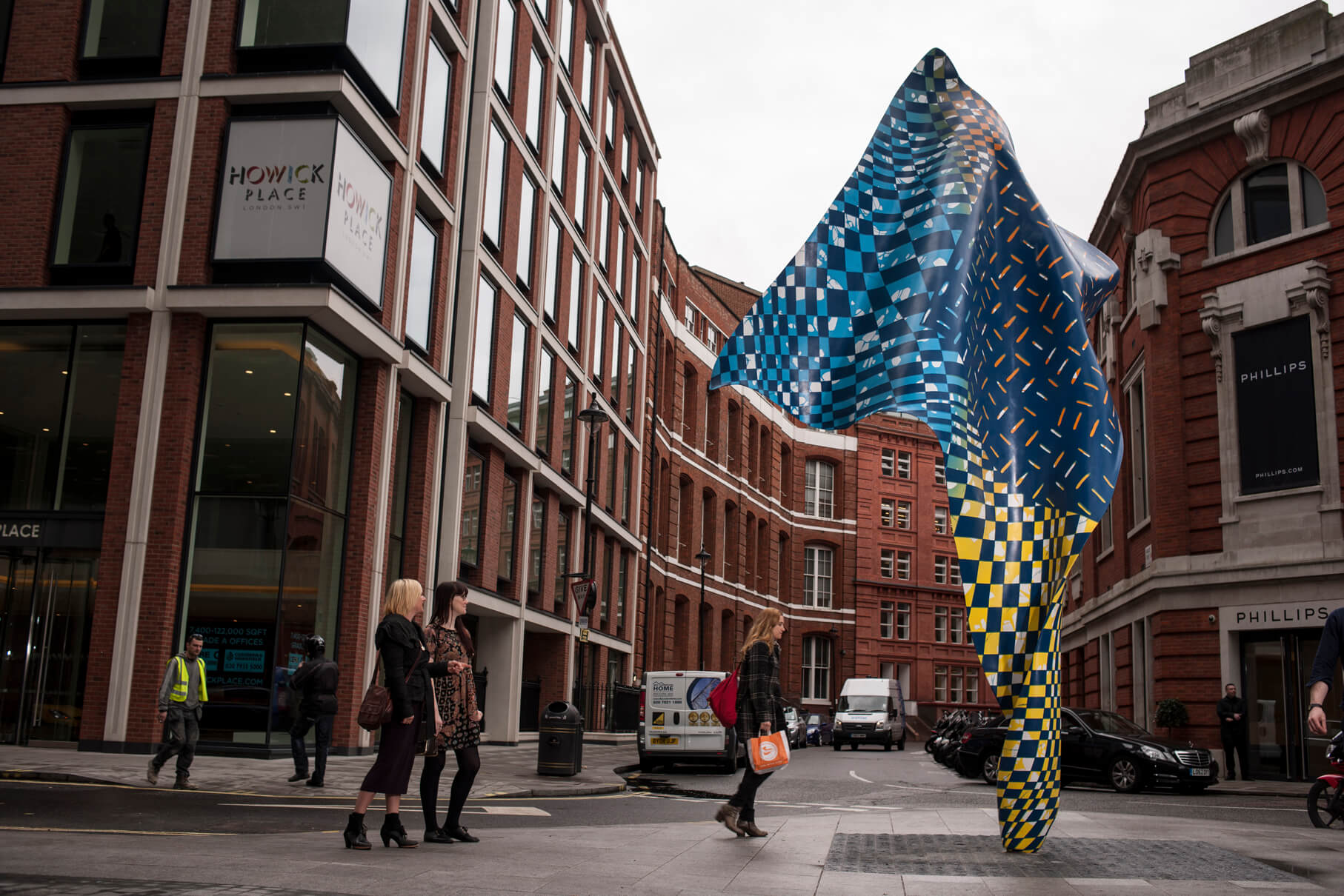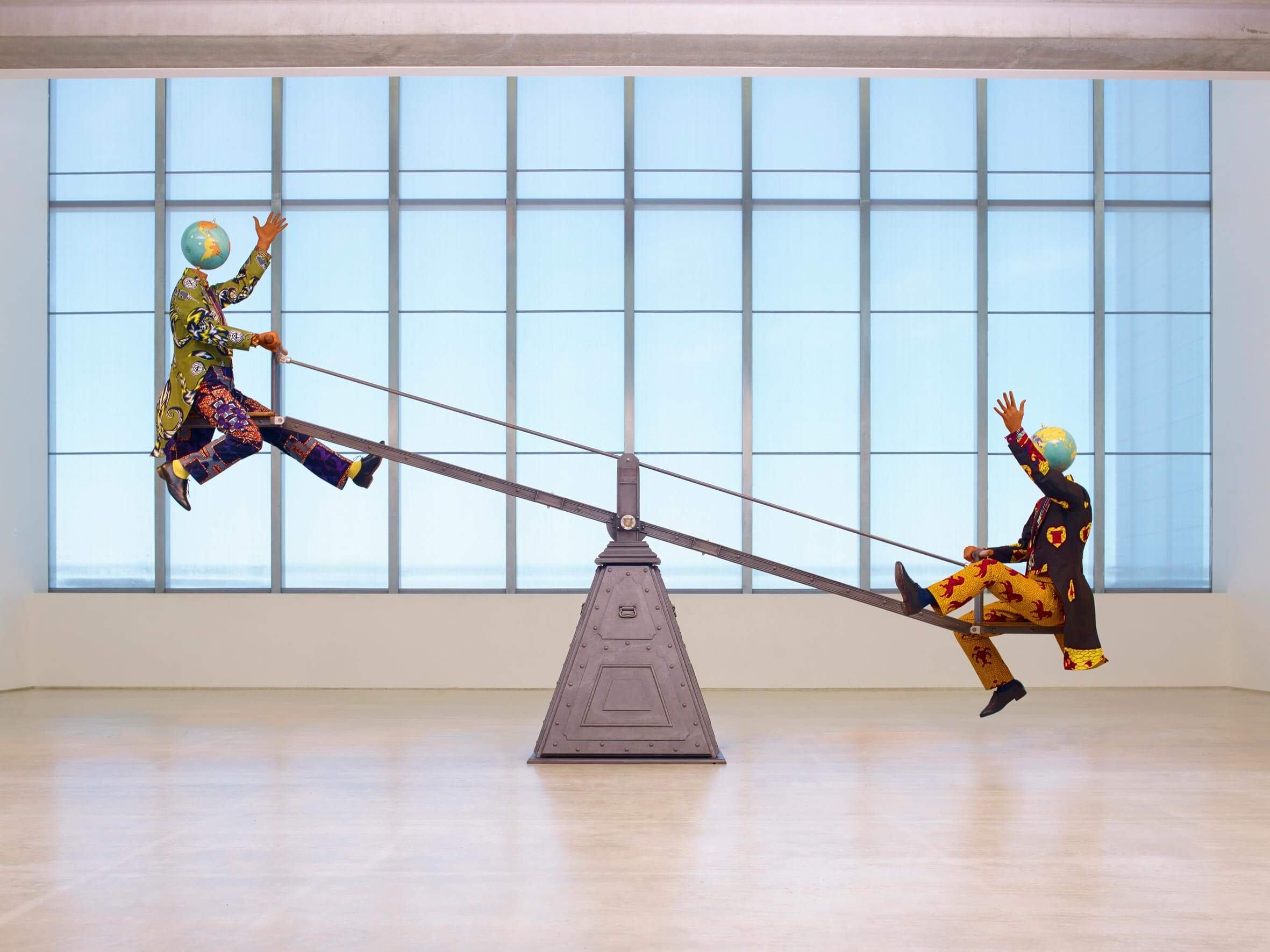Why are you interested in this project?
I think it is important that there is a support network for all artists and the use of technology greatly helps people with a physical disability to continue making artworks.
Three examples of past work
Nelson’s Ship in a Bottle, 2010

A ship in a bottle is an object of wonder. Adults and children alike are intrigued by its mystery. How is it possible that such towering masts and billowing sails are shrunk to fit inside such a commonplace object? Nelson’s Ship in a Bottle takes this childhood sense of wonder and magnifies it to match the monumental scale of Trafalgar Square.
A scale replica of HMS Victory was placed in a giant bottle atop the Fourth Plinth. Through the sheer glass of the gargantuan bottle, you could see the lustrous black and sumptuous gold of the ship’s hull and its towering masts with their 37 magnificent sails. These sails, though, rather than being made with locally woven canvas as they were on the original ship, are made of opulently coloured and patterned textiles, assumed to be ‘African’. They are, however, Indonesian influenced batik. The fabrics are bought in Petticoat Lane in London and were introduced to Africa by British manufacturers via Dutch colonisers in the nineteenth century. Shonibare often uses these fabrics in his work to stimulate a complex conversation about culture, authenticity and value in modern-day society.
Nelson’s Ship in a Bottle signifies the direct relationship between Nelson’s victory at Trafalgar and multiculturalism in Britain today, as well as a celebration of London’s immense ethnic wealth. This was the first project on the Fourth Plinth to reflect specifically on the relationship between the birth of the British Empire, its evolution and Britain’s present day multicultural context.
Wind Sculpture, 2014

Wind Sculptures is a series of outdoor sculptures that explore the notion of harnessing motion, and freezing it in a moment of time. Made from industrial materials normally applied to building structures which exude a sense of solidity, the new series will play with the idea of capturing the volume of wind. The works manifest as giant three-dimensional pieces of fabric that appear to be blowing in reaction to the natural elements of the surrounding environment. The tension of these abstract works will be heightened by the contrast of the media used, and the movement recreated in the delicate realisation of the work. Here, the pieces refer to industrially mass-produced objects, whilst also encapsulating the naturally occurring phenomenon of wind. The large monumental structures are deconstructed by patterns normally associated with soft wearable textiles. In this manner that which is normally domestic or personal becomes public, and the works become surreal depictions of the familiar.
Each Wind Sculpture is over 6 metres in height, and are painted in full colour exactly duplicating a piece of the Dutch-wax fabric that is synonymous with Shonibare’s work, only in giant form. Here the pieces of fabric are elevated on colourful stilt-like structures engineered specifically to balance the weight of the overall artwork.
End of Empire, 2015

Co-commissioned by Turner Contemporary and 14-18 NOW, as part of the 14-18 NOW programme of World War 1 Centenary Art commissions.
See-saw is a metaphor for dialogue, balance and conflict, all wars are usually based on a form of power struggle for resources usually based on the annexation of territory. In the work two opulently dressed 19th century figures sit facing each other on a stark iron cladded Victorian Seesaw. They are dressed in Victorian costumes made of African textiles – a signature feature of Shonibare’s work. The mannequins have globe heads that indicate the areas occupied by the Triple Alliance and the Triple Entente on their globe heads. The see-saw moves very slowly to symbolise the weight of the argument as it moves in favour of each side. The audience will experience the work in the way that a dynamic argument is experienced, over time it will be possible to see a different work of art. They will see it when the two parties are balanced and when they are out of balance, no particular side is favoured in the work. The work is an appeal to the open mindedness of the imagination.
Website
http://www.yinkashonibarembe.com
How do you use technology in your work?
Personally, I am now able to draw using a tablet and my computer. This allows me greater freedom and control and as a result independence when making my work.